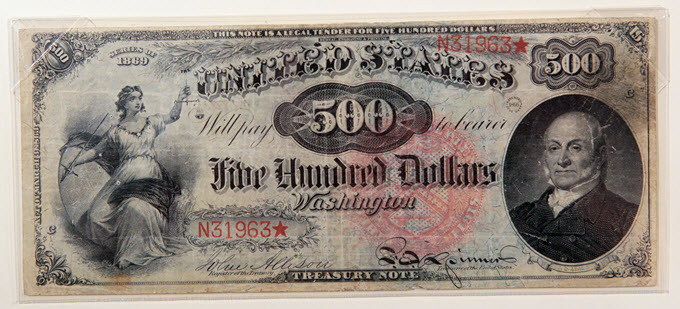 Monthly Savings Calculator
Monthly Savings Calculator

It can be difficult to put money into savings every month, but it may help you to know what the future value of your deposits will be. This calculator can help you determine the future value of your savings account.
First enter your initial investment and the monthly deposit you plan to make. Then provide an annual interest rate and the number of months you would like to consider. Press CALCULATE and you’ll get two numbers: the future value of your account and your total interest earnings. You can also set an income tax rate & inflation rate to see how those factors will impact your total amount saved and the spending power of your money. After calculating your returns you can click on the CREATE PRINTABLE REPORT button at the bottom of the calculator to generate a report. Financial institutions currently offering savers high-yield savings rates are listed below the calculator.
Today's Columbus Savings Rates
The following table shows current rates for savings accounts, interst bearing checking accounts, CDs, and money market accounts. Use the filters at the top to set your initial deposit amount and your selected products.
Compounding Interest: The Future Value of Monthly Savings

When you start planning for your financial future, you'll need to address compounding interest at some point. Contrary to popular belief, compounding isn't meant only for Wall Street gurus. It's beneficial to anyone who wants to invest in their futures. Compounding interest can help you create a comfortable retirement plan, and it can help you increase your investment returns over time.
What is Compounding Interest?
Essentially, compounding means that your interest is earning interest. Not only are you earning interest on your principal deposit, but you're also earning on the interest amount as well, so your principal deposit grows faster than if you just earned interest on the deposit alone. How often you compound determines how quickly your deposit grows, with more compounding periods resulting in greater interest accrued.
For example, let's say you deposit $2,000 into your savings account, and your bank gives you 5 percent interest annually. After a year, you've earned $100 in interest, bringing your balance up to $2,100. If you don't touch that extra $100, you can then earn $105 in annual interest, and so on.
To calculate compound interest, we use this formula: FV = PV x (1 +i)^n, where:
- FV represents the future value of the investment
- PV represents the present value of the investment
- i represents the rate of interest earned each period
- n represents the number of periods
The above calculator compounds interest monthly after each deposit is made. Deposits are applied at the beginning of each month. If you want to make deposits at the end of each month, then please subtract the first deposit from the initial savings amount. For example, if you had $1,000 saved up and wanted to deposit $100 at the end of the month you would set your initial deposit to $900.
Most banks in the United States compound interest daily and add it to the account at the end of the month based on the daily average balance for each month.
The Benefit of Compounding Interest
The advantage of compounding interest is simple: it's a great way to earn more wealth over time. Granted, as with any investment, it takes a while to see the full effect of compounding as it's most powerful over long periods of time. In our above example, it would take about 14 years for you to double your principal deposit. To speed up the process, you could choose to compound your interest daily rather than quarterly or yearly. We provide a calculator which allows you to compare compounding frequencies side-by-side.
The following table shows how $10,000 invested for a year at a 2.3% APR earns interest over the course of a year at different compounding frequencies.
| Compounding Frequency | APR | APY | Interest |
|---|---|---|---|
| Annual | 2.3% | 2.30000% | $230.00 |
| Quarterly | 2.3% | 2.31991% | $231.99 |
| Bi-monthly | 2.3% | 2.32215% | $232.22 |
| Monthly | 2.3% | 2.32440% | $232.44 |
| Semi-monthly | 2.3% | 2.32553% | $232.55 |
| Bi-weekly | 2.3% | 2.32561% | $232.56 |
| Weekly | 2.3% | 2.32613% | $232.61 |
| Daily | 2.3% | 2.32658% | $232.66 |
| Continuous | 2.3% | 2.32665% | $232.67 |
More frequent compounding drives higher interest income, and a higher annual percentage yield drives further growth when the interest is allowed to compound for many years.
The Sooner the Better
Even though it's never too late to start saving, it's better to start compounding interest as early as possible to give your deposit more time to grow. If you're 33 years old and begin compounding $100 a month at 1.5 percent interest annually, you'll have earned nearly $60,000 by the time you're 70. Compare that to starting at age 66 when you'll only have earned $5,000 by age 70.
It Works Both Ways
You may have heard the term "compound interest" used in relation to a loan or debt you owe. Unfortunately, compounding can work both ways, and you should always aim to earn it, not pay it. Assuming your credit card company charges 20 percent interest on any unpaid balances, your $1,000 balance can easily turn into $1,200 in debt by the end of the year. If you pay off debts quickly, compound interest rates won't hurt too much. However, if you tend to make minimum payments, you'll be paying off your principal much slower, resulting in more money spent on interest.
While compounding interest won't make you rich overnight, it's a great way to slowly build your wealth over time. However, keep in mind that the concept also works in favor of your debtors.
Change privacy settings
